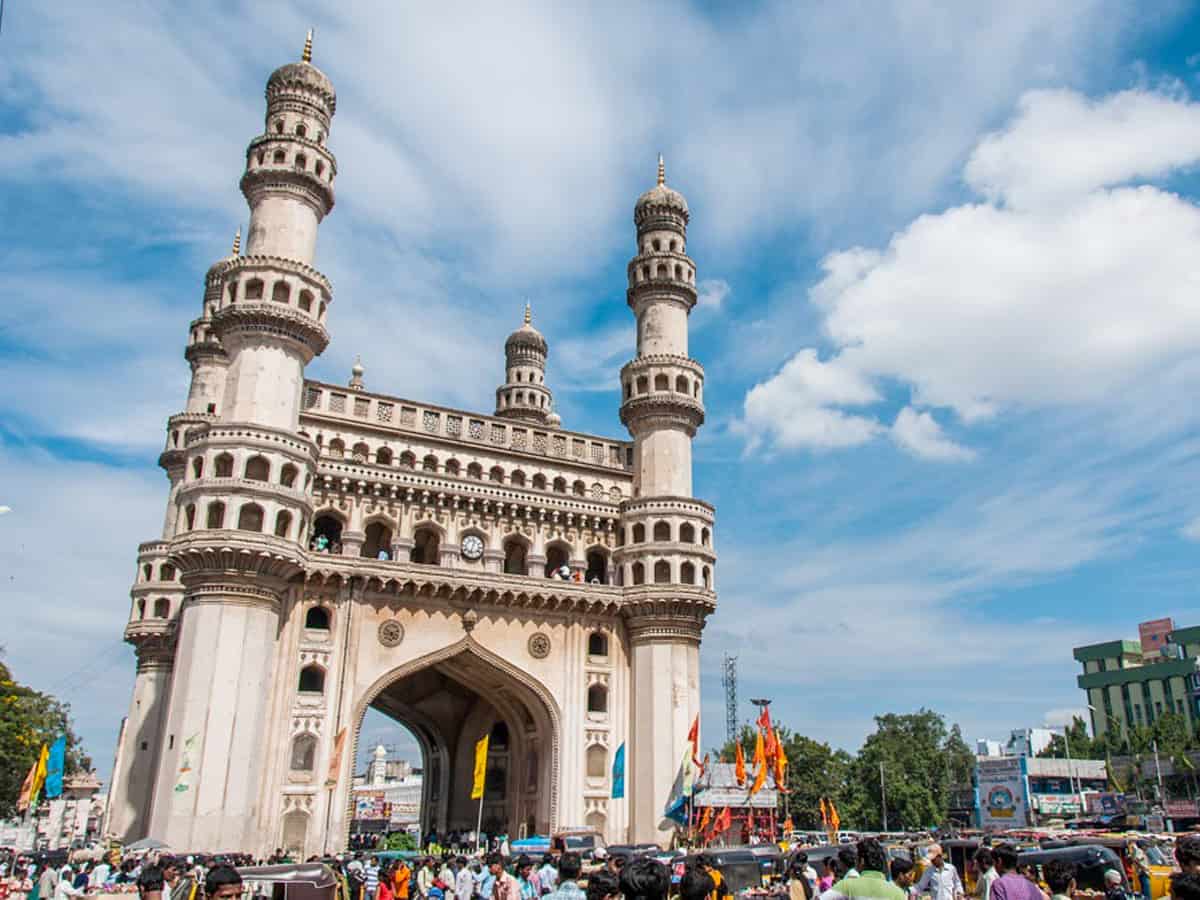
Hyderabad: From years and decades, rumours have been afloat that some kind of ’secret tunnel’ exists, connecting the historic Charminar to the Golconda fort. However, time and again it has been proved that it doesn’t exist. If it did, the tunnel would have been a great discovery, but alas.
But where have these rumours come from? Why has this myth managed to stay afloat from years? Not only does it persist, it also causes a media flutter each time it is raised, inadvertently putting a spanner in relevant developmental works at the Charminar which need to be taken up by the Archaeological Survey of India (ASI).
Moreover, it may also be noted that Hyderabad (and the Deccan region in general) has a very rocky terrain, which is why building an underground secret tunnel or passage will not be an easy task.
Last week’s tamasha over the ‘secret tunnel’ rumours
Earlier this week, what was supposed to be an innocuous electricity or lighting work at the Charminar turned into a media blitz after word began spreading that the tunnel was found or was being dug out. In fact, it even drew the attention of the local area corporator who came to figure out what was happening (he understood it was nothing after ASI officials explained the same to him).
However, it turned out to be nothing. Historically, it may be noted that there is no such tunnel mentioned in authentic sources. When contacted, a senior ASI official told Siasat.com that the Charminar faces power shortage everyday, and that the lights inside the stairs are very old as well, due to which the authority decided to make some infrastructure changes.
“We were planning to shift all the cables outside, and we wanted silent generators apart from providing lightening conductors. So while digging two feet pits, (the foundation is very low of the Charminar), we dug some modern apron stones which we put there 20-30 years ago. The mistake was we gave the work to the CPWD, whose workers kept the stones on the side, drawing public attention,” the official added.
Local issues cost Charminar permanent illumination
The ASI official, who did not want to be named, also told Siasat.com that the department wanted to propose permanent illumination for the Charminar. ”I suggested it for the Charminar as a lot of people also come here till 1 am daily. I told higher ups that we could also highlight it for various occasions.
It would be a very good attraction,” the official stated.
However, the plan may not get executed, given the drama that transpired earlier this week thanks to rumours of the secret tunnel’. ”We even stopped all the lighting or electricity cable work halfway, and all those fixtures and short circuits will now be inside the monument thanks to whatever happened. I tried to speak to (Asaduddin) Owaisi also, but nothing has come off it,” the ASI official said.
History of Golconda fort/Charminar
The Golconda Fort’s origins are traced back to the 14th century when the Rajah of Warangal Deo Rai (under the Kakatiya Kingdom which ruled from Warangal) built a mud fort. It was later taken over by the Bahmani Empire between 1358 and 1375. It was later developed into a full-fledged citadel by Sultan Quli who founded the Qutb Shahi kingdom in 1518 following the death of last sovereign Bahamani emperor Mahmud Shah Bahamani.
Earlier, Sultan Quli was a commander and later governor of Tilang (Telangana), under the Bahamani Empire (1347-1518), when its second capital was at Bidar. Sultan Quli, who was originally from Hamadan, rose to the level of Governor under the Bahamani empire. At this point of time he was given the fort, which he began developing into a walled-city. It eventually came to be called Golconda Fort (name derived from Telugu Golla-conda, or shepherds hill).
The fort has 87 bastions, and eight gates, of which a few are not accessible to the general public as they are under army control. It is believed to be one of the Deccan’s most impregnable forts, and had kept Mughal emperor Aurangzeb’s army at bay for eight months when he laid siege to Hyderabad in 1687. Aurangzeb succeeded and ended the Qutb Shahi reign that year and took Abul Hassan Tana Shah, the last Golconda king, captive.
Charminar: The Charminar is Hyderabad’s foundational monument. Built in 1591, it was constructed to mark the city’s establishment by Mohammed Quli Qutb Shah, the fourth ruler of the Qutb Shahi (or Golconda) dynasty. Prior to the Charminar being built, the Golconda fort was a walled city, from where the first three kings Qutb Shahi kings had ruled.
After Hyderabad was founded, the fort was eventually turned into a military barrack. However, the fort was also the place from where the final Qutb Shahi-Mughal war was also fought in 1687, after Aurangzeb attacked the Golconda kingdom. He succeeded after an eight month long battle, after which the entire Qutb Shahi area was brought under Mughal territory.
The Nizams (Asaf Jahi dynasty), who ruled next, were high-ranking Mughal commanders originally. The first Nizam, Mir Qamruddin Khan, attained the position in 1724 and ruled from Aurangabad, which was the capital of the Deccan (Nizam territory). His father and grandfather were part of the Mughal armies that destroyed Hyderabad in the final war between the Golconda and Mughal dynasties in 1687.

